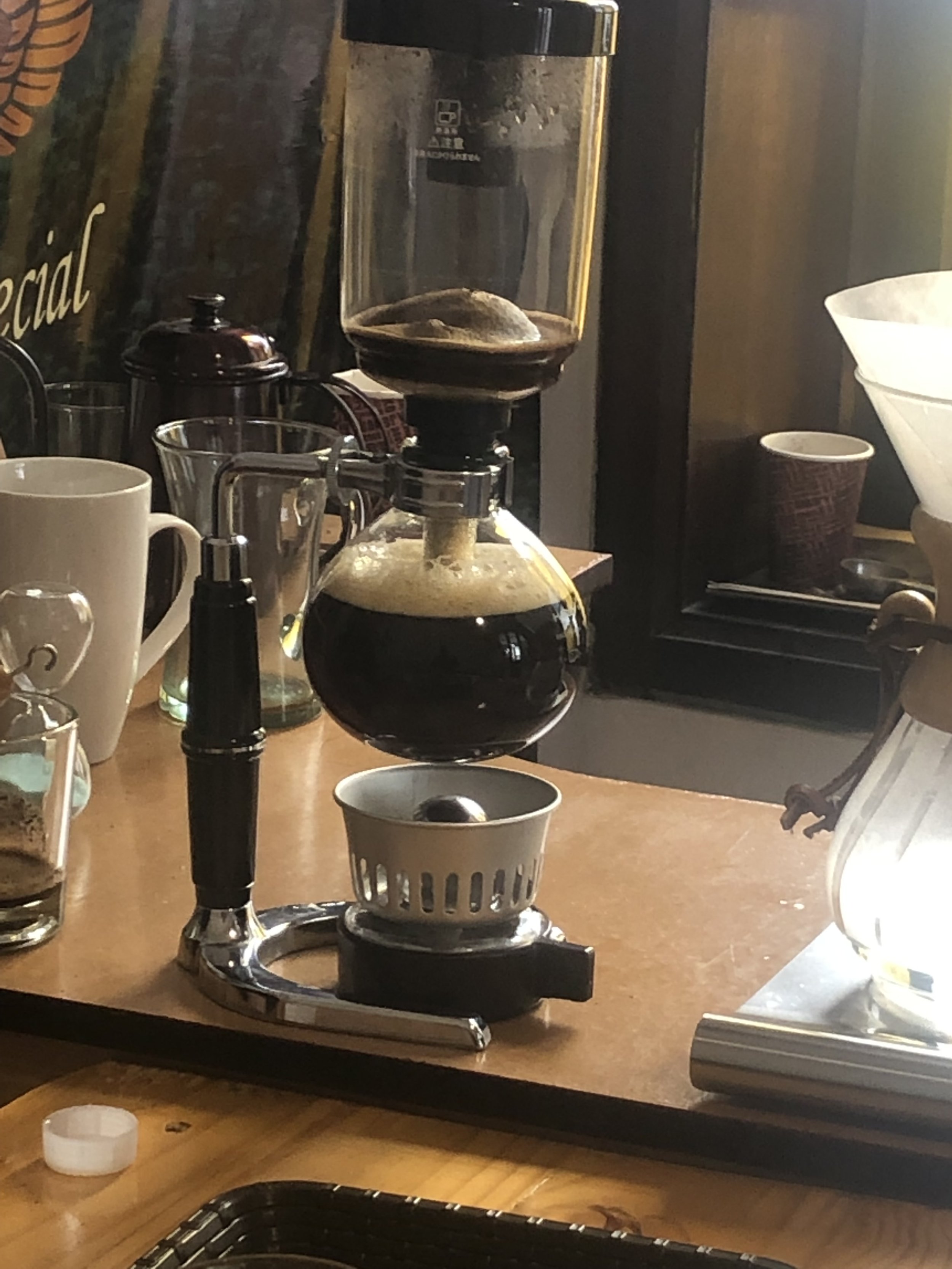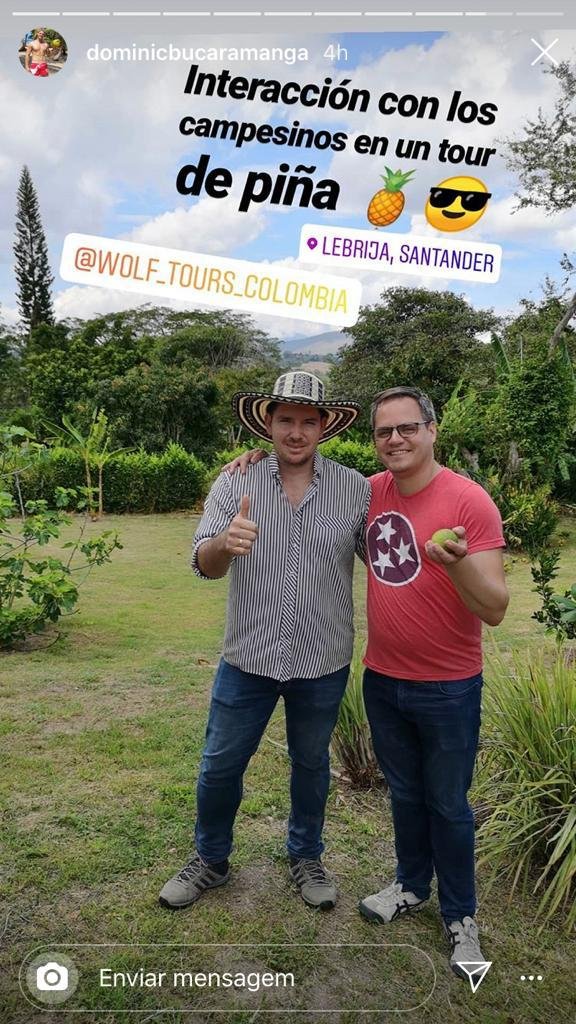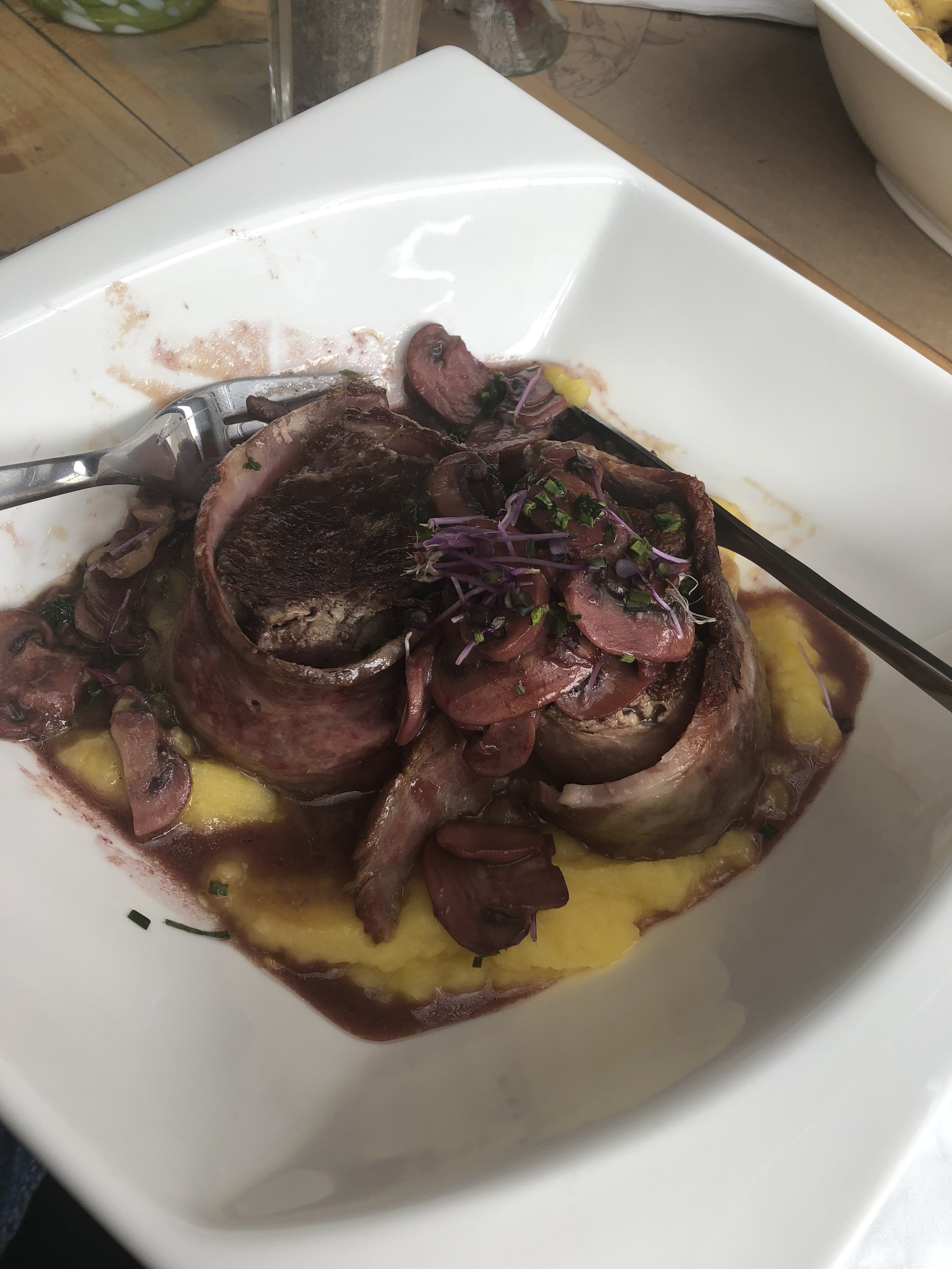Colombia Pt.2: Santander Surprises
In my last blog, I reminisced about my transcendent first trip to Colombia in 2018. And even though that journey was a life-changing experience, I didn’t expect to make my return just a year later. Hey, I’m not complaining. Delta had a points sale on South American destinations and my prospective travel partner for this trip had heard me rave about Colombia and wanted to join in on the fun. We decided to focus this trip on Bogotá, as there was so much I wasn’t able to cover in just two days on my previous trip. However, he ended up having to cancel due to unforeseen circumstances, and this ended up being a solo trip!
Disappointment about that aside, I was excited to have an opportunity to double-click on Bogotá and decided to, once again, add a second city to my Columbia itinerary. Traveling solo, I felt this was an opportunity to go somewhere less touristy, and experience life a bit more like a local. One of the best things about visiting Colombia is that traveling within the country is easy due to many inexpensive domestic flights as well as many bus services. With my time at a premium, it was off to Skyscanner to see what my side trip options were. Most of the time, domestic flights from Bogotá can be found for as little as $50.
Wanting to save Medellin for a non-solo visit, the options I had were Barranquilla, Bucaramanga, Cali, and Santa Marta. Tayrona and beaches of the Santa Marta region definitely called out to me, as did the vibrance of Shakira’s hometown Barranquilla. Similarly intriguing was the salsa dancing capitol of the world, Cali. Ultimately, I landed on Bucaramanga. Not only was Bucaramanga a short flight from Bogotá, it was relatively inexpensive and highly regarded as being one of the safest large cities in Colombia and is also located in a safer province, Santander. (Note: not everyone agrees on this - I heard a fair amount of fear-mongering regarding its proximity to the Venezuelan border as well as Santander’s less safe neighbor to the north, literally called Norte de Santander (North of Santander)).
But first, what did I do in my first couple of days in Bogotá? I’ll admit, a crazy flying schedule that included a 9-hour layover in Atlanta, had me taking it easy for a day or so, just spending time in the always-inviting Chapinero. Of course, when you need a jolt of energy in Colombia, what better way to do that than with fresh Colombian coffee? For the first official activity of this vacation, I headed down to Candelaria to pay a visit to Leandro at Divino Cafe Especial. This family business roasts and ships artisan Colombian coffee, grown in the state of Huila. (One interesting thing I learned on this trip is that while the coffee axis, comprising the areas around Manizales, Pereira, and Armenia, is the most famous coffee-growing region of Colombia, there are other coffee-growing areas scattered around the country, including in Santander). What makes Divino a special place to visit in Bogotá, is that Leandro offers a coffee-tasting class that helps drinkers deepen their appreciation for different flavor notes as well as identify the relative quality of a roast. I found this class very enriching, as I learned more about different coffee production techniques as well as preparation methods. It was a fun and informative couple of hours, and fortunately Divino ships its coffees internationally!
Siphon-based coffee machine at Cafe Divino Especial
Of course, I’m very big on experiencing the culinary traditions of wherever I visit. So, I was very excited to hit up Beyond Colombia’s Bogotá Street Food Tour (pics in the gallery below). Joining a couple dozen other tourists from around the world, I got to experience a wide array of Colombian specialties, starting with the expected empanadas, pan de bono (a wonderful cheese-infused bread roll), and buñuelos (they’re like pan de bono but deep-fried). From there, we branched out into Colombia’s tradition of hearty soups and stews, grilled meats and afternoon treats such as hot chocolate with cheese and avena (a cold drink made from oatmeal). The tour ended with yet another coffee lesson, reinforcing from my earlier coffee lesson how the Colombian coffee industry embraces technology, particularly this nifty siphon brewing device from Japan.
The next day, it was time to depart for Bucaramanga. Fortunately, I would not experience any inertia. Despite delays, it was an easy enough flight. And while BUC is a smaller, less-English speaking airport, my elementary Spanish and I managed to hail a taxi and make the relatively non-descript ride from the airport to the Cacique neighborhood of Bucaramanga. Perhaps the most posh area of the city, Cacique is busy and bustling. As someone who frequently stays at IHG hotels, I had booked the Holiday Inn in Bucaramanga. I chose well - this location was clean and modern with standout service. Oftentimes, American visitors are directed to the ritzier Dann Carlton, which also seems very nice, but is a bit pricier. Ultimately, I made the right decision as my time in Bucaramanga was so action-packed that I didn’t spend any time in the hotel except for food and rest.
(Side note: Holiday Inn is attached to the upscale Cacique shopping mall. This afforded me the opportunity to easily try Colombian fast food chain, Frisby. Two thumbs up for my fast-food enthusiasts.)
Sites like TripAdvisor might give you the impression that there isn’t a lot to do in greater Bucaramanga. It’s true that Bucarmanaga is less built for tourism compared to Bogotá , Medellin, Cartagena, and the Eje Cafetero. However, Bucaramanga is a very regionally important city and Santander is one of Colombia’s more developed provinces and a major player in the country’s outdoor activities tourism, being home to San Gil. Activities abound around Bucaramanga, but you might have to do a bit more digging compared to its better-known counterparts.
Fortunately, in my preparation, I stumbled upon Wolf Tours. Run by Dominic Wolf, a German who fell in love with Colombia as an exchange student and who has since become a popular social media influencer, Wolf Tours offers a wide variety of experiences in Bucaramanga and the surrounding area. Many of the experiences Wolf Tours offers are delivered by local residents. Staying in Bucaramanga for just two nights, I had to prioritize among the many options. I landed on spending my first day taking a city tour that also included neighboring Floridablanca and heritage town, Giron. On the second day, we visited a pineapple farm in Lebrija, a charming agricultural town.
Highlights from the city tour
From Dominic, I learned that Bucaramanga is not only an important industrial and educational hub, it is known as “La Ciudad de Los Parques” (the city of parks). A robust ecosystem of parks adds to the greenery surrounding the city on all sides. With just the morning to spend in Buca, we didn’t get to spend time at all of the parks, but one highlight was stopping by San Pio park where a Botero statue, La Gorda, happened to be. Other highlights included posing by the hormigas culonas (big-assed ants) statue. You might ask, what is this about. As it turns out, these roasted queen ants are a delicacy in parts of Colombia, sold in small bags by street vendors. I accepted a bag, and yes, I did eat them. I’ll say the fresh ones tasted a bit like fresh-popped popcorn. Pro tip: eat them right away - their flavor doesn’t hold up after a few minutes.
After getting a general sense of Bucaramanga’s park scene, we stopped at an outdoor cafe for coffee campesino-style and then it was off to Giron.
La Gorda by Botero, Parque San Pio, Bucaramanga
Giron, short for San Juan de Giron, is one of Colombia’s 17 heritage towns, and is known for its unique architecture and cultural preservation. It was a quiet early afternoon in Giron, spent taking in the architecture, historical artwork, and enjoying lunch in a local restaurant. Giron was very neat to see, and I suspect that it becomes much livelier around holidays and celebrations.
Basilica Menor in the main plaza of Giron.
Across Colombia, Bucaramanga is known as the city where one goes to buy shoes and leather goods (not to be confused with the Colombian retail shoe store chain Bucaramanga, which sells shoes across the country). Boutiques selling handmade footwear dot the streets around Carrera 22. We visited a couple of shops, and I bought two pairs of shoes - one of which I’ve worn consistently for over five years!
Next up was Floridablanca for the piece de resistance of this tour, Santísimo. Santísimo is a 37 meter-high statue representation of Jesus Christ situated at the top of its namesake park, El Parque Cerro del Santísimo. Getting there requires a ride in a ski lift and a short journey in a massive elevator. We were lucky to have a beautiful day to see the statue in all its glory as well as the panoramas of the surrounding towns and greenery. You could even see coffee growing in the distance (some pictures from the day in the gallery below).
Perhaps my favorite part was the light show that takes place after sundown. Downhill from the statue, multicolored lights are displayed over fountains against an orchestral soundtrack (see video for brief clip). I enjoyed this with a glass of a local sweet wine whose name I don’t remember. It was a nice way to cap off a day of local sights and sounds. After this, I was ready to rest and get ready for the next day.
Highlights from Lebrija
The next morning it was pineapple time. We rode off to Lebrija and stopped by a family farm where multiple varieties of pineapples are grown. It was an educational experience about pineapple farming that included touring the fields, learning about how different varieties of pineapples are used and how to properly pick a pineapple. I got to try fresh pineapple juice and of course, sliced pineapple straight from the farm. As I mentioned in my previous blog, Colombia is a fabulous destination for fresh fruit. Since I couldn’t bring any of it back to the US, the next best thing was to enjoy it fresh from the source! It was also fun to get a small glimpse into Colombian farm life. As someone who didn’t grow up on a farm, but grew up farm-adjacent, it was neat to see what farming looks like in a different country and climate. Even more, hiking the hills of pineapples was a great workout that registered 34 flights climbed on my iPhone health app!
Me, pictured with the pineapple farmer. Unfortunately, I have forgotten his name. Photo by Dominic Wolf.
However, it wasn’t just Wolf Tours offering great food-based activities in Bucaramanga. I also stumbled upon Traveling Spoon, a network of home cooks across the world offering lessons in local cuisine. I was able to connect with Fabio Americo, a professionally-trained chef with experience in high-end restaurants who runs a home kitchen with his mother, Carmen.
Highlights from the cooking class
One of the side effects of my first trip to Colombia is that I am a full-blown patacon/toston addict. Those fried flattened circles of plantain goodness are my kryptonite, and I wanted to know how to be able to have them any time I wanted. I have similar feelings toward arepas. Fabio ensured I would leave his apartment knowing not only how to make these quintessential Colombian accompaniments, but also an excellent entree for them to complement, pollo sudado.
But first, we paid a visit to Bucaramanga’s main fresh food market, Mercado Central. With four stories of meats, produce, herbs, spices, and many other colorful delights, it is easy to get overwhelmed here. However, Fabio navigated the market with ease, demonstrating his vast knowledge as he hand-selected each ingredient from his preferred vendors. We then made the short walk back to his apartment, where we started cooking. I got to play sous-chef for the afternoon, while Fabio ensured we had a delicious, cohesive meal to share.
On top of the patacones, arepas, and pollo sudado, he made us some wonderful juices (lulo and zapote, IIRC) and some plantain chips (chifles) for the road. I still make pollo sudado regularly - it’s become a comfort food that transports me back to good times in Colombia! Even more, this cooking adventure included a cocktail from the restaurant where Fabio was working, a trendy lounge called make.it.public (unfortunately, Google reports that it has closed). As I sipped my drink before heading to collect my bags and make it to the airport, I became completely sold on Bucaramanga’s vibe. It doesn’t have the international visibility of a Bogotá or Medellin, but it has friendly people, rich history and culture, great food, and a perpetually spring-like climate, similar to Medellin.
Dominic, Fabio, and Carmen were all excellent hosts who helped me have a very memorable time in Bucaramanga. It is definitely a place I plan to go back to. I missed out on taking advantage of its proximity to Chicamocha National Park and other outdoor destinations, so that’s something for the next trip.
Wrapping up in Bogotá
After a short delay, I landed back in Bogotá and made my way to my hotel in Parque 93. Many individuals and guides recommend this area, and it was nice. However, I underestimated how much time it would take to get to Candelaria from there. My agenda for my last full day in Bogotá was to do the War and Peace walking tour, visit El Museo del Oro, and maybe get a haircut. I checked off 2 out of 3. I didn’t account for the rush hour traffic, and didn’t come close to making it to the tour in time. Lesson in hand, I made it to the Museo del Oro early, and thoroughly enjoyed learning about the history of gold and golden artifacts dating back centuries. It’s a popular destination. Even in the morning, expect people to move through the museum at a brisk pace to prevent traffic jams.
With some free time, I made my way to the Museo Nacional. I loved this. With so many artifacts of the country’s history from the colonial period to the present, I got a peek into what was culturally top of mind at many different points in Colombia’s modern history, from multiple perspectives within the nation’s diverse populace.
Pictures from Museo Nacional and one from Museo del Oro:
It was a beautiful sunny late afternoon, so I decided to walk back to Chapinero from there (about a 45 minute walk - I make no endorsement about the safety of this choice other than to say that this route at this time of day felt safe to me). Walking by at least one university, and multiple clusters of shops, restaurants, and apartment buildings, it was a stretch of road that was full of life - and it felt like a perfect way to wrap up another life-affirming trip.
But before I could call the final curtain on Colombia pt. 2, I still had to deal with my shaggy hair. I found a barbershop in El Parque de Los Hippies and put my novice Spanish to the test. I think I passed - I got a great haircut and a nice beer - for about $6 USD.
My hair looking presentable again, I am ready to rest on my last night in Colombia.
From there it was back to Parque 93 to rest for my morning flight. As I left to return to the US, I was a bit sad. Whenever I leave a country, there’s always a part of me that wants to stay an extra day. But where can you do it all and be done? I find there is always something else to see and things you want to do again - and this is especially true for me in Colombia. I’ve yet to experience the vibrance of Medellin, carnival in Barranquilla, or the fincas of Eje Cafetero. I feel like I’ll never run out of things to see and do in Colombia, but I will try!
What are your experiences traveling to Colombia? Are there other places there I should see? Share in the comments below!



















































